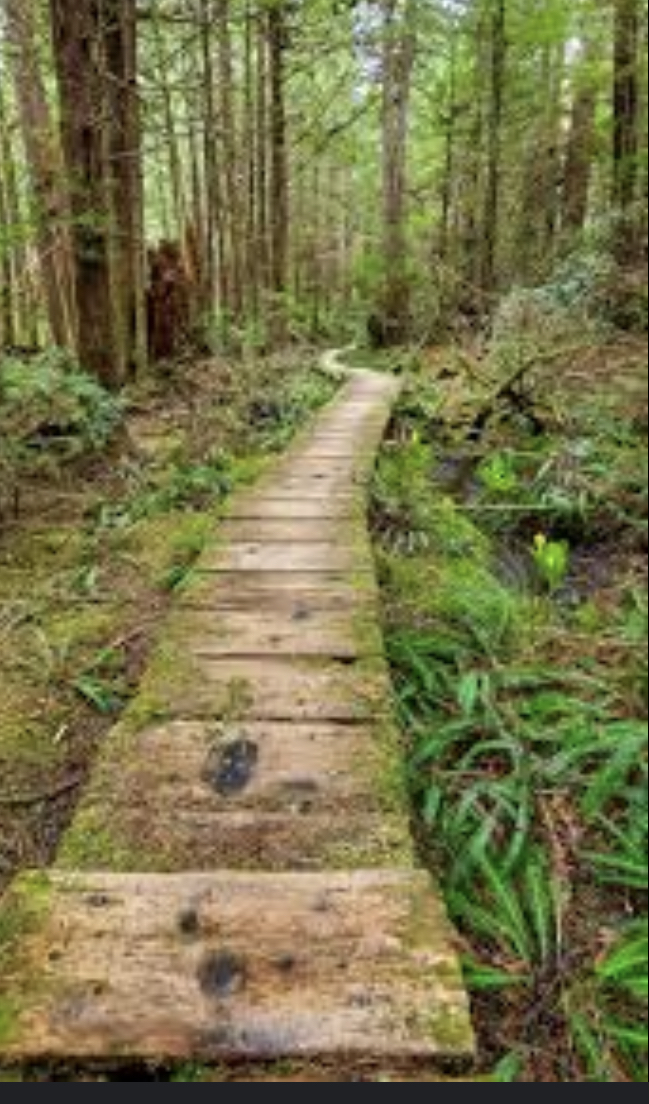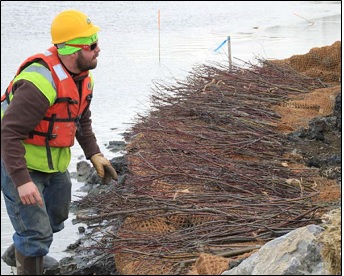
 12
12




Zone 8b 16”rainfall
 2
2




 6
6




"If you always do, what you always did, you'll always get, what you always got!" Mike S.
"It's easy to chop out excess trees. It's really hard to get a mature tree today." Joseph Lofthouse

 3
3




- Tim's Homestead Journal - Purchase a copy of Building a Better World in Your Backyard - Purchase 6 Decks of Permaculture Cards -
- Purchase 12x Decks of Permaculture Cards - Purchase a copy of the SKIP Book - Purchase 12x copies of Building a Better World in your Backyard
 4
4




Timothy Norton wrote:You are going to potentially fall into a lose-lose situation.
A. You don't drive on it enough and you have to trim consistently to prevent yourself from building a wall.
B. You compact the soil underneath by driving on top of the trees and kill them due to compaction.
There is more than likely a Goldilocks scenario where this could work but I would personally find it tedious to keep up on.
 5
5




Zone 8b 16”rainfall
 4
4




Thomas Michael wrote: Not what I expected, I have wanted to grass my driveway (800' 20%) for years. Maintenance would be mowing it once a month.
The Alaska highway, 2000miles, through Canada was originally built as corduroy road. It will certainly work to stabilize your road. I assume you have a local source of trees. Free local road top sound great. If they live and grow I would count that as a plus. Just make sure you drive / mow often, because mother nature will reclaim that fast if you don't keep it knocked down.
On second thought that maybe a bad thing. 3 years in you may have a near solid impenetrable young forest and not a road.
Do have time? A 20' test section for 2 summers would teach you a lot. Can you lay the logs alternating and let only the tips grow? 12' logs with the middle 10' kept mowed, the center may stop sprouting?
What about outside rails, tips sit on the rail on both sides. Log bases sit on the dirt, encuraging roots at the bases and growth at the tips? Tom.
Zone 8b 16”rainfall
 5
5





Zone 8b 16”rainfall
 4
4




Ned Harr wrote:Cool idea, I hadn't even thought of this. What if the logs could be planed on the upper side so the road is flat? Is it possibly they'd regrow their bark to cover the planed surface and then you'd have a flat, durable road?
It is a bit pie-in-the-sky, but I like it. Maybe it could be done even more feasibly with genetically engineered plants that are very durable and grow sideways...? Possibly other features could be useful for roads too, like if at the ends they grew vertically and produced leaves at that point so your road has a beautiful built-in guardrail that takes co2 out of the air.
Zone 8b 16”rainfall
 2
2




Timothy Norton wrote:You are going to potentially fall into a lose-lose situation.
A. You don't drive on it enough and you have to trim consistently to prevent yourself from building a wall.
B. You compact the soil underneath by driving on top of the trees and kill them due to compaction.
There is more than likely a Goldilocks scenario where this could work but I would personally find it tedious to keep up on.
Zone 8b 16”rainfall
 2
2




Zone 8b 16”rainfall

 3
3




Tradition is not the worship of ashes, but the preservation of fire.
 1
1




Jeremy VanGelder wrote:You might have the option of laying a hedge with the trunks of your trees all the way down on the ground, across your road. But still attached to their roots. The rule for laying a hedge is to lay the wood uphill from the roots so that the sap still flows upward to the top of the tree. Roads need a side slope for drainage, so you could plant your trees on the lower side of the road, lay them up and across it. Then the runoff will water your trees.
Western redcedar is pretty happy to spread it's roots and send up shoots from them, especially when planted in a wet area. I wonder if we could discover what substance redcedars really like, and then deposit a bunch of it in the middle of a road to encourage roots to grow into the road. Redcedar candy.
Zone 8b 16”rainfall
 3
3




 6
6




Visit Redhawk's soil series: https://permies.com/wiki/redhawk-soil
How permies.com works: https://permies.com/wiki/34193/permies-works-links-threads
 3
3




Fish heads fish heads roly poly fish heads
 2
2




I have a path through my field that used to get seriously soggy in the winter. Every fall, I would dump 20 or more garbage cans of cedar chips from either tree companies, or ones we chipped ourselves, to make a narrow path through the wettest area, and gradually, higher and higher up the slope, as the low area gradually improved. I was amazed how many chips it took over how many years! However, we wanted to be able to mow the area in the spring, and our mower far prefers to hit woody stuff than gravel. We also wanted grass to grow there eventually. Now it's walkable most of the way even in the wettest winters, and the area near the winter creek is fully covered in grass. There's one steep part of the slope that's still an issue - give it another 5 years!Dan Fish wrote:... I just don't see the upside.
Visit Redhawk's soil series: https://permies.com/wiki/redhawk-soil
How permies.com works: https://permies.com/wiki/34193/permies-works-links-threads
 1
1




William Bronson wrote:Maybe driving on the trunks would not be an issue.
I have abused mulberry and locust trees endlessly, yet they still live.
Zone 8b 16”rainfall
 3
3




Jay Angler wrote:The picture you posted is of a living bridge in India, and so far as I'm aware, they are just for foot traffic.
…….
It would be a neat project, but would involve a fair bit of time to set it up, and then regular management during the early years. It would be pretty cool though!
Zone 8b 16”rainfall
 5
5




I'm thinking that planks staked down might be a longer lasting approach than mulch. I'm guessing that mulch on top will encourage rot. That said, with my real-life example, if part of the goal is to build soil, rot is what does that!Dalton Dycer wrote:In this scenario the center trees are covered with mulch which would I’m guessing either encourage root growth… or rotting

Visit Redhawk's soil series: https://permies.com/wiki/redhawk-soil
How permies.com works: https://permies.com/wiki/34193/permies-works-links-threads
 2
2




Jay Angler wrote:
I'm thinking that planks staked down might be a longer lasting approach than mulch. I'm guessing that mulch on top will encourage rot. That said, with my real-life example, if part of the goal is to build soil, rot is what does that!Dalton Dycer wrote:In this scenario the center trees are covered with mulch which would I’m guessing either encourage root growth… or rotting
Have people seen depictions of the archaic paths through bogs in England?

Zone 8b 16”rainfall
 2
2




It was more to show that planks can be used as part of the base - if they could make planks in the stone age, we ought to be able to manage the same now! I recall that there's evidence that these paths covered considerable distances.Dalton Dycer wrote:The pictures you posted are so cool. Proof cool projects can and have been done for ages by hand! That would suffice for just a path just fine but if you could have a natural 2 story gazebo bridge by a pond to increase access I think you’d have a pretty dreamy oasis hotspot!
Visit Redhawk's soil series: https://permies.com/wiki/redhawk-soil
How permies.com works: https://permies.com/wiki/34193/permies-works-links-threads
 3
3




Zone 8b 16”rainfall
 3
3




Visit Redhawk's soil series: https://permies.com/wiki/redhawk-soil
How permies.com works: https://permies.com/wiki/34193/permies-works-links-threads
 6
6





 1
1




William Bronson wrote:I think layers of very thin saplings or cuttings might work better than bigger trunks.
The bundles of live willow stakes that are used for erosion control are called brush mattresses:
Zone 8b 16”rainfall
 1
1




There is madness to my method.
"Life finds a way"- Ian Malcolm
"We're all mad here" - The Cheshire Cat
 8
8




 5
5




Zone 8b 16”rainfall
 3
3




Cat Knight wrote:
(other than cool looking)why?
Also, how will the trees on the bottom continue to live if you keep cutting the shoots they send out? A tree will only continue to live for so long without leaves....?
Zone 8b 16”rainfall
 3
3




 1
1




Joshua Baugh wrote:Make biochar, put on road/driveway, run over...boom living road
Zone 8b 16”rainfall

|
Don't MAKE me come back there with this tiny ad:
The new gardening playing cards kickstarter is now live!
https://www.kickstarter.com/projects/paulwheaton/garden-cards
|






